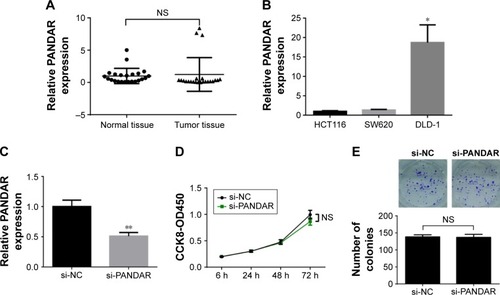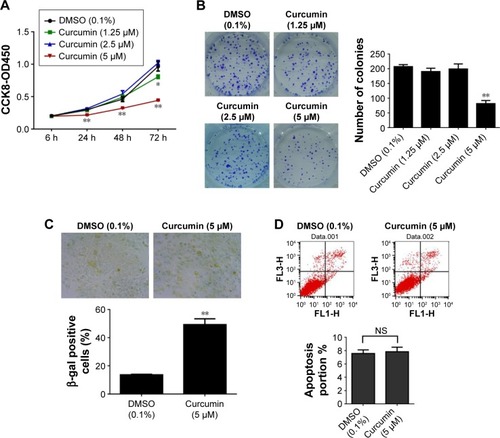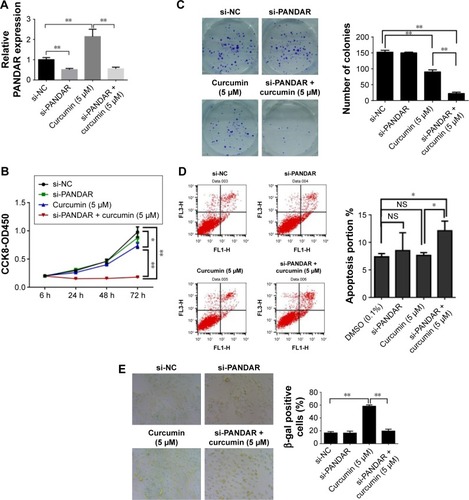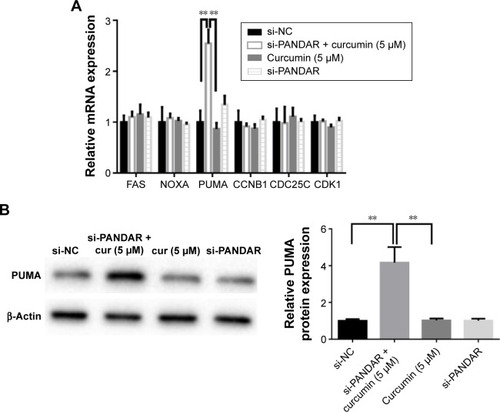Figures & data
Table 1 Primers for real-time polymerase chain reaction analysis
Figure 1 LncRNA PANDAR is undifferentiated in human colorectal cancer (CRC) tissues and does not affect cancer cell growth in vitro.
Abbreviations: CCK8, Cell Counting Kit-8; LncRNA, long noncoding RNAs; qRT-PCR, quantitative real-time polymerase chain reaction; siRNA, small interfering RNA; NS, nonsignificant; si-NC, small interference-negative control; OD, optical density.

Figure 2 Low-dose curcumin triggers senescence but not apoptosis response in colorectal cancer cells.
Abbreviations: CCK8, Cell Counting Kit-8; DMSO, dimethylsulfoxide; SA-β-Gal, senescence-associated β-galactosidase; NS, nonsignificant; OD, optical density; FL, fluorescence.

Figure 3 Downregulation of PANDAR in curcumin-treated CRC cells increases apoptosis but attenuates senescence.
Abbreviations: CCK8, Cell Counting Kit-8; CRC, colorectal cancer; DMSO, dimethylsulfoxide; qRT-PCR, quantitative real-time polymerase chain reaction; SA-β-Gal, senescence-associated β-galactosidase; siRNA, small interfering RNA; NS, nonsignificant; FL, fluorescence; OD, optical density; si-NC, small interference-negative control.

Figure 4 qRT-PCR and Western blotting screening genes associated with the switch from senescence to apoptosis.
Abbreviations: qRT-PCR, quantitative real-time polymerase chain reaction; si-NC, small interference-negative control.

